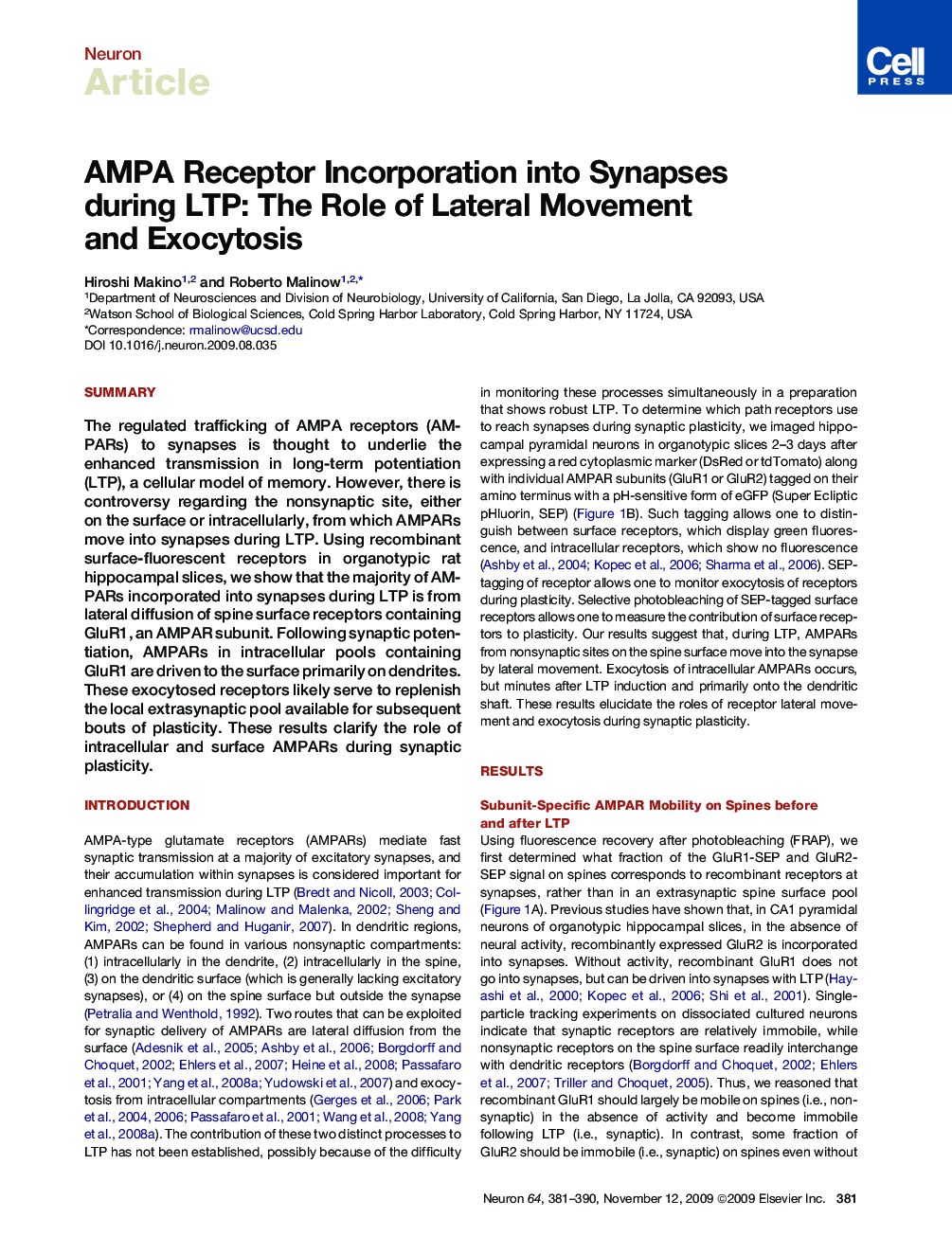| Article ID | Journal | Published Year | Pages | File Type |
|---|---|---|---|---|
| 4322801 | Neuron | 2009 | 10 Pages |
SummaryThe regulated trafficking of AMPA receptors (AMPARs) to synapses is thought to underlie the enhanced transmission in long-term potentiation (LTP), a cellular model of memory. However, there is controversy regarding the nonsynaptic site, either on the surface or intracellularly, from which AMPARs move into synapses during LTP. Using recombinant surface-fluorescent receptors in organotypic rat hippocampal slices, we show that the majority of AMPARs incorporated into synapses during LTP is from lateral diffusion of spine surface receptors containing GluR1, an AMPAR subunit. Following synaptic potentiation, AMPARs in intracellular pools containing GluR1 are driven to the surface primarily on dendrites. These exocytosed receptors likely serve to replenish the local extrasynaptic pool available for subsequent bouts of plasticity. These results clarify the role of intracellular and surface AMPARs during synaptic plasticity.
